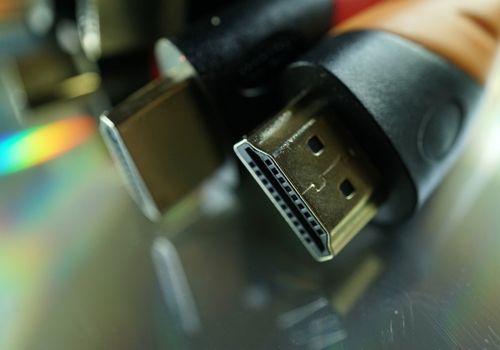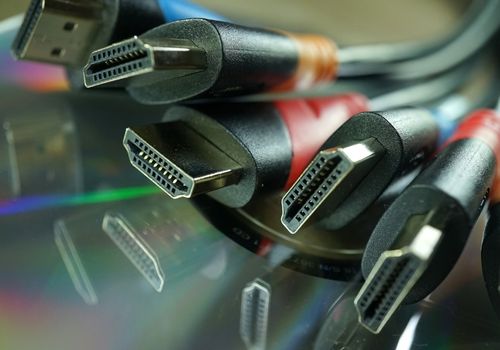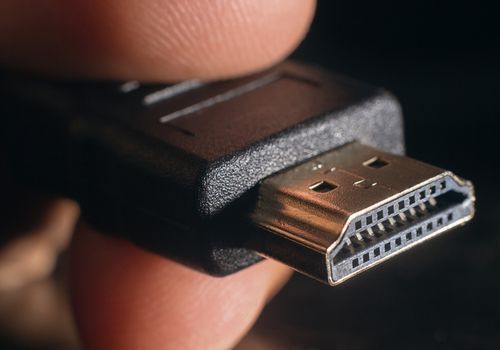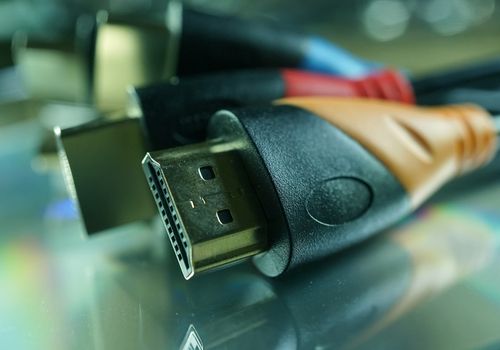
You can identify an HDMI 2.0 cable by looking at its connector. It will have a small, rectangular label with 'HDMI 2.0' on it. You can also check the box it came in, which should mention this.
I recently bought a Blu-Ray player and wanted to connect it to my TV. There were a bunch of HDMI cables lying around the house, but I needed one that was HDMI 2.0. I only had to check its connector, and I was able to stream movies in no time.
Although identifying HDMI 2.0 cables is easy, there's a bit more that you need to know. I've touched on this and provided an identification guide below.
Contents
If you want to know whether you have a HDMI 2.0 cable, I recommend checking its connector. There should be a label with 'HDMI 2.0' on it.
Another way to find out is to look at the specifications label on the package that the HDMI cable came in. It should specify if the HDMI cable is 2.0.
You can use these methods to check other cable versions and not just a HDMI 2.0 wire.

Now that you know how to differentiate an HDMI 2.0 cable from its counterparts, it's a good idea to take a look at the different versions of HDMI out there.
Not many users know that there are quite a few of them, each with its own features and benefits.
Let's talk about them.
HDMI 1.0 was the first HDMI specification that entered the market. It was released all the way back in 2002.
It supports a maximum data rate of 4.95 Gbit/S, along with a maximum resolution of 1920 x 1080 P at 60 Hz.
HDMI 1.1 hit the market next on September, 9th 2006. It was a big change, as it introduced support for Deep Color technology, as well as extended gamut YCC, or xvYCC for short.
HDMI version 1.2 was also released in 2006. It not only added support for higher resolutions, but it also could handle an increased bandwidth and more color spaces.
By far, the best feature that it came with was the HDMI Ethernet channel. It essentially allowed devices to share an internet connection without a separate Ethernet cable.
HDMI version 1.2 cables are still in use. Of course, they are superseded by later versions.
HDMI version 1.3 was released in June 2007. It can handle a bandwidth of 10.2 Gbps, which means that you can play video in 1080 p at 60 frame rates per second, as well as have 8-channel audio.
HDMI version 1.3 cables also support Audio Return Channel (ARC) technology. So, you'll be able to send audio signals from your TV back to an AV receiver.
HDMI 1.4 was released in March 2009. It came with support for 3840 × 2160 p resolution at 24 HZ, 3D video up to 4096 x 2160 resolution, and the ability to play more color spaces.
You can use version 1.4 for Audio video bridging - you'll get higher bandwidth when you transfer audio and video over a standard Ethernet network.
HDMI 2.0 was released in September 2013 and came with more features compared to its predecessors. It could handle 4K video up to 60 frames per second, could be used with 32 different audio channels, support 4 simultaneous streams, and had an impressive dynamic range of 1536 kHz.
HDMI 2.1 was released in November 2017 with some cool new features, like auto low latency mode, and a variable refresh rate.
I'm a big fan of the auto latency feature. You'll be able to play games and other fast-paced content with very little delay.

The above HDMI versions were basically revisions of each other. They each came with new features that could be added to the HDMI standard.
They can be further categorized into 4 types, with each classified solely on their transfer speeds.
This guide wouldn't be complete if we didn't take a good look at what they are.
Standard HDMI cables transmit digital video and audio signals at 4.95 Gbps. As you might have guessed from the 'standard' in their name, they are the most common HDMI type.
They have a maximum resolution of 720 p at 60 HZ and can support 3D video, as well as Audio Return Channels.
Standard HDMI cables are typically used to connect televisions to DVD players and gaming consoles. Plus, they are around 25 feet in length (you can make them longer with an extension cable).
HDMI 1.0 and 1.2 fall into the standard HDMI cable category.
High-speed HDMI cables function at 10.2 Gbps. So, they are the right choice if you need to transfer more data at once. For example, if you own a 4K TV, or use a Blu-ray player.
The HDMI standard can support resolutions of up to 4K ultra HD, as well as 3D video. The cable type works pretty well with HDTVs too.
HDMI versions 1.3 and 1.4 falls into the high-speed HDMI cable category.
Premium high speed HDMIs have a maximum bandwidth of 18 Gbps, which means that they can support 4K resolution video at an impressive 60 Hz.
At the same time, they are capable of transferring dynamic HDR video at high speeds, along with more support for expanded color spaces.
HDMI 2.0 are the premium high speed HDMI cable type.
Ultra-high-speed HDMI cables work at 48 Gbps. They're capable of driving 8 or even 10k displays at 120 HZ. HDMI 2.1 falls into this category.

HDMI ports come in a bunch of different shapes. By far, though, the most common type has to be the regular 19 pin connector.
Apart from the standard connector, there are 2 other connector types that your HDMI cable can use. They are the mini and micro types.
Let's take a look at the three connector types.
Standard connectors are the most common type. They're not only used for HDMI cables, but TVs, projectors, and even receivers.
Mini connectors are smaller than the typical standard connectors. They're often used in portable electronics, like mobile phones and tablets, as they don't take up much space.
Micro connectors are another small connector type. They're also used in cell phones and laptops because of how little space they use.
Answered below are some popular questions.
HDMI is an abbreviation that stands for High-Definition Multimedia interface. It's a digital connector interface that allows uncompressed media to be transmitted from one device to another. Both audio and video can be transmitted on an HDMI cable.
HDMI enables communication between different digital devices, like digital cameras, HDTVs, computers, mobile phones, and video receivers.
If you know anything about analog VGAs, you'd know that HDMIs are the digital replacements for them. They were created by HDMI licensing LLC.
All HDMI versions are backward compatible with each other. What does this mean for you, though? You'll be able to use all HDMI cables and devices with each other.
However, there's a catch:
When the HDMI devices you've connected come in two different versions, the image that pops up on your screen will bear the capabilities of the lower HDMI version that's being used.
HDMI cables come with industry-wide support, as well as seamless standardization. It is the most reliable choice for portable devices, televisions, consoles, and other devices. The mass industry-wide standardization worked in its favor.
While on the topic, you might be wondering how the audio industry moved to HDMI. It wasn't until 2007 that flatscreens started to outsell Cathode Ray Tube TVs.
CRTs were bulky and offered far from sharp displays. So, the thin film technology in the newer LCD cables became popular. They could easily support 1920 x 1080 p resolutions, so this was a no-brainer.
Analog video interfaces couldn't really work with LCD flatscreens. So, electronics companies started to create a standard for digital audio, which we now know as HDMI.

If you want to find out if your HDMI cable is 2.0, check its connector. There should be a label telling you what kind of HDMI cable it is. You can also find out whether it's version 2.0 or not by checking its packaging. It should specify what type of HDMI cable version it is.
Apart from HDMI 2.0, there are a couple of other versions out there. They each have different transfer speeds. Each of the cables is backward-compatible with the other. So, you'll be able to interchange them (but the quality will be lower than what you're swapping it with).
